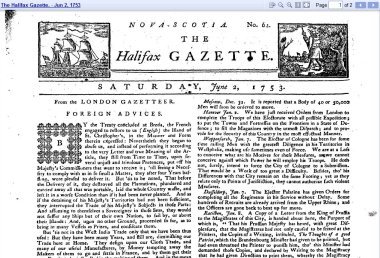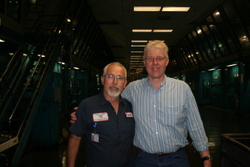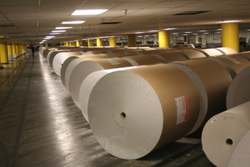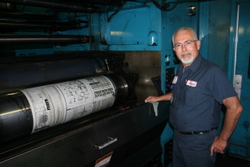The New York Times released quarterly earnings that indicated that is paywall is working. The report is the first to give some indication of incremental subscriber growth beyond the initial surge of sign-ups that came when the paywall went up in March. It shows that more than a quarter million people are now paying at least the $15 minimum fee. Even better is that traffic to the NYT.com website is actually up 2% from a year ago.
“The Times has created the perfect paywall,” writes Ryan Chitturn on Columbia Journalism Review. “It’s getting tens of millions of dollars from hardcore readers while letting in enough Google traffic and casual readers to continue boosting its online readership and collecting ad revenue off of those eyeballs.”
Chitturn estimates that the Times will take in about $63 million in digital subscriber revenue this year and more than $210 million in total digital revenue. That’s more than it costs to operate the newsroom. Which means that The New York Times could theoretically get out of the print business entirely and still make money.
Does that mean it’s time for everyone to jump into the pool? Bill Mitchell thinks so. Writing on Poynter.org, he tells of moderating a panel at the World Editors Forum in which publishers who had taken the paywall plunge spoke of their initial trepidation and then relief when the steep declines in traffic that they had feared failed to materialize. Traffic to the Berliner Morgenpost has actually doubled since it put up a paywall in late 2009.
Mitchell quotes The New York Times’ Jim Roberts saying the wall has had a morale dividend. “There is more of an investment I feel in the newsroom among our journalists since the introduction of the paywall. They feel a greater stake in the product,” he said.
Perhaps the time is right. The Newspaper Association of America reports that traffic to newspaper websites jumped 20% in September compared to a year ago among the coveted adult demographic. “Average daily visits were up 21%; total pages viewed were up 10%; total minutes spent were up 11 %; and unique visitors were up 9 %,” the NAA reported.
Thus the great paradox continues. Newspapers are more popular than they’ve ever been, but the business model is broken beyond repair. The NAA numbers are encouraging, and perhaps indicates a flight to quality among readers who are fed up with social media noise. For the past five years people have been publishing all kinds of nonsense online because they could. Now the novelty is wearing off and quality is becoming a differentiation point.
Google’s new Panda search algorithm is supposed to be a game changer in its ability to distinguish quality content from crap. We noted recently that Demand Media, which specializes in crap, has had to remove 300,000 articles from its website because Google won’t pay attention to them anymore. And the world hardly noticed.
The fact that newsrooms turn out a good product has never been debatable, but the idea that people who had been accustomed to getting it for free for 15 years would decide to pay for it is still an open question.
Give credit to the early adopters for fine-tuning the balance of free vs. paid content to achieve some success. The idea is to grant just enough access to entice readers to pay but not enough to give away the farm. The Wall Street Journal lets you read a couple of hundred words gratis but then wants a credit card. Perhaps it and the Times have figured out the formula.
We’ve been skeptical about paywalls for two years, but we’d be the first to cheer their success. If they enable good journalism to flourish once again, we’re all for it.
Washington Post Co. Holds Out
 Apparently the Washington Post Co. isn’t convinced. Publisher Katharine Weymouth was quoted in Politico last week saying that paid subscriptions don’t make sense for the Post at the moment. The newspaper’s philosophy is that its website should be “open to everybody and attract as many people as we can to spend as much time as they can with our journalism, and assume that that will bring them back for more.”
Apparently the Washington Post Co. isn’t convinced. Publisher Katharine Weymouth was quoted in Politico last week saying that paid subscriptions don’t make sense for the Post at the moment. The newspaper’s philosophy is that its website should be “open to everybody and attract as many people as we can to spend as much time as they can with our journalism, and assume that that will bring them back for more.”
Politico points out that the Post has hardly been a beacon of publishing success lately. It has shed more than 45% of its newsroom staff and it just last month announced plans to close nine of its 11 suburban regional bureaus. The Post Co. does have a couple of things going for it, however, including its profitable Kaplan education division and its phenomenal 30% market penetration. You’d think a market share like that would be an incentive to charge more for the product, but Weymouth seems in no hurry. She isn’t ruling out a paywall but says she’s content to wait and see what works.
“They Won’t Invest in You”
Invantory is developing software tools to help people sell things. It wants to be kind of an alternative to Craigslist, with a mobile twist. The founders thought newspaper publishers would be potential customers, because they already know the classified advertising business and they have a desirable channel. But Invantory gave up on doing business with newspaper publishers. The principal reason: their computer are a mess.
“Newspapers’ online technology platforms [are] not standard,” wrote co-founder Ian Lamont on the Invantory blog. “This means that non-trivial integration work is required for practically any new feature or service, whether created in-house or purchased from a vendor. There are dozens of online content management systems (CMS) in use, most heavily customized.”
In other words, any chance newspaper publishers might have to federate their once-highly profitable classified advertising businesses into a network that could compete with Craigslist is undercut by technology decisions made years ago and incompatibilities perpetuated by customization.
The Invantory co-founders met with Newsosaur Alan Mutter at the New England Newspaper Publishers Association. Mutter, who himself tried to start a business to service newspaper publishers a couple of years ago, told them to forget about pursuing a model based up on serving the dying newspaper industry. “VCs with any experience won’t invest in you,” he said.
Miscellany
The i newspaper celebrated its first anniversary this week, challenging the conventional wisdom that print dailies are dead. The commuter-friendly daily, which delivers news in bite sized nuggets, has succeeded in building a paid circulation of 184,000 during its first year. And it’s reportedly profitable, too.
“Data journalism,” in which reporters mine public information to discover nuggets of news, is an increasingly popular discipline. Editors Weblog has a list of free tools anybody can use to become a data journalist.




 Newspapers have been called the “daily miracle.†The accomplishment of delivering a product of such remarkable breadth and complexity to hundreds of thousands of doorsteps by
Newspapers have been called the “daily miracle.†The accomplishment of delivering a product of such remarkable breadth and complexity to hundreds of thousands of doorsteps by 





























